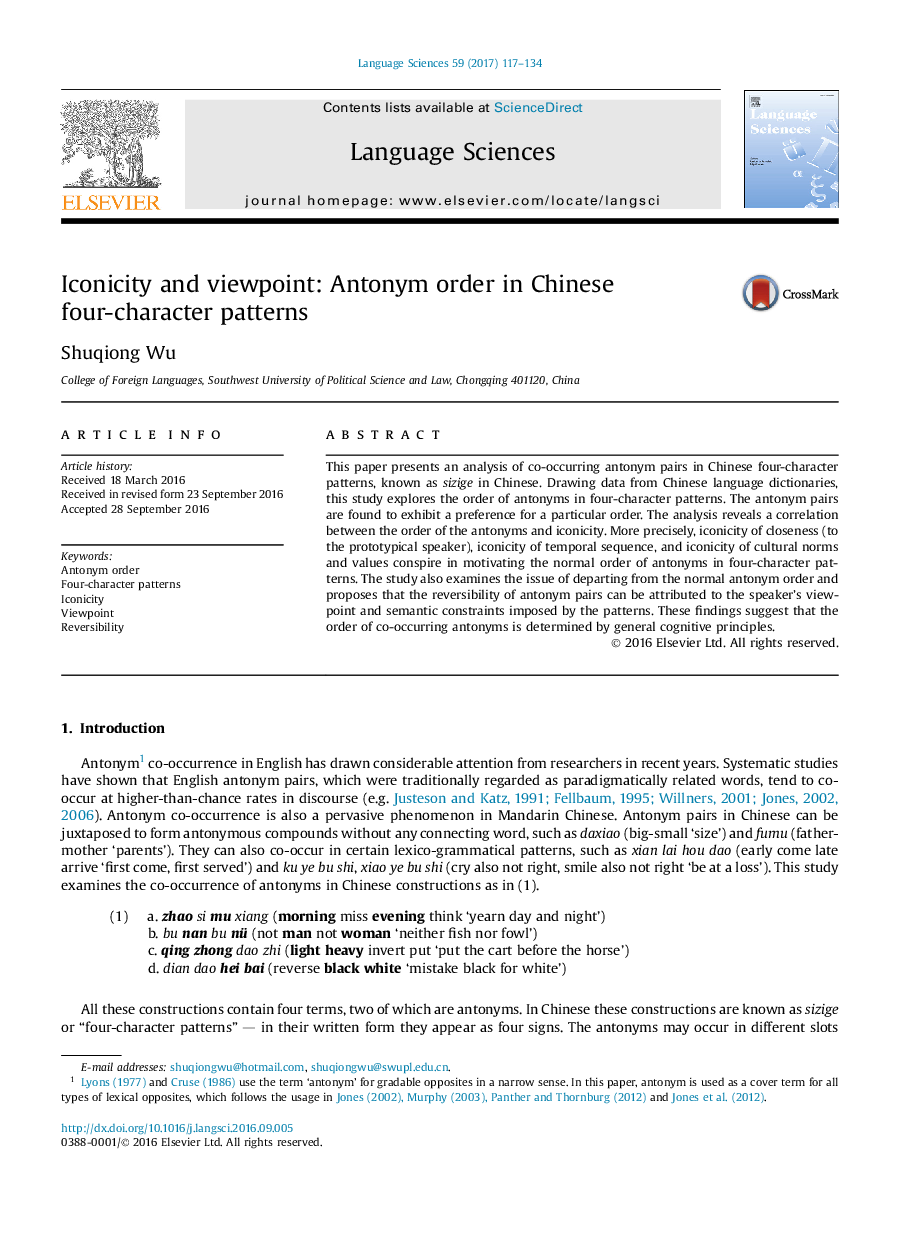| Article ID | Journal | Published Year | Pages | File Type |
|---|---|---|---|---|
| 7533888 | Language Sciences | 2017 | 18 Pages |
Abstract
This paper presents an analysis of co-occurring antonym pairs in Chinese four-character patterns, known as sizige in Chinese. Drawing data from Chinese language dictionaries, this study explores the order of antonyms in four-character patterns. The antonym pairs are found to exhibit a preference for a particular order. The analysis reveals a correlation between the order of the antonyms and iconicity. More precisely, iconicity of closeness (to the prototypical speaker), iconicity of temporal sequence, and iconicity of cultural norms and values conspire in motivating the normal order of antonyms in four-character patterns. The study also examines the issue of departing from the normal antonym order and proposes that the reversibility of antonym pairs can be attributed to the speaker's viewpoint and semantic constraints imposed by the patterns. These findings suggest that the order of co-occurring antonyms is determined by general cognitive principles.
Keywords
Related Topics
Social Sciences and Humanities
Arts and Humanities
Language and Linguistics
Authors
Shuqiong Wu,
